#Xia Dynasty
Explore tagged Tumblr posts
Text
TBF the Chinese also tried writing everything on (bone, in their case) tablets and hoarding them in their basement. Then some early-modern folks stumbled on that basement with a giant pile of bones in it and started grinding the bones down to sell as medicine. It was a miracle that enough of them actually survived long enough to be researched by modern archaeologists.
Unfortunately bones are also a lot less convenient than clay for writing really tiny symbols on, so a typical Chinese bone text is something like a dozen characters long.
(Also this still doesn't get us to the Xia, just [their successors] the Shang. Which is already much more than was known to be attested before that one pile of bones was discovered.)
The problem with ancient history is that ancient historians were not all that great from separating rumors from facts.
Like, you learn that China’s first dynasty was the Xia Dynasty, and at first that seems pretty solid.
But then you realize that all the knowledge we have about the Xia Dynasty’s existence can be traced to like twoish books from multiple dynasties later, which talk about how the Xia Dynasty was founded by Yu the Great, who had a pet dragon and defeated nine-headed monsters, because this is all knowledge that has been handed down in a giant game of Telephone and no one knows which part is even real.
And a lot of knowledge we have about ancient history is like this. Did Sun Tzu (creator of Sun Tzu’s Art of War) really exist? Or was The Art of War just a collection of common knowledge from the Warring States Period? Did Lao Tse (founder of Taoism) really exist? Or was the Tao Te Ching just a collection of Taoist thought?
Anyway, whenever we tell stories about things that happened in Whatever BC, remember to mentally add “according to this one guy from like 500-1500 years later, who learned it from bedtime stories”.
#Xia dynasty#Shang dynasty#oracle bone script#it's not just China by the way#it isn't very clear if Pythagoras of Samos really existed either#like he didn't ride dragon carriages but he did supposedly do a bunch of other ridiculous stuff
406 notes
·
View notes
Text
Time Travel Question 16: Ancient History VII and Earlier
These Questions are the result of suggestions from the previous iteration.
This category may include suggestions made too late to fall into the correct grouping.
Please add new suggestions below if you have them for future consideration.
I am particularly in need of more specific non-European suggestions in particular, but all suggestions are welcome.
#Time Travel#Morocco#Phoenicia#The Mediterranean#The Xia Dynasty#Pompeii#Domestication#Agricultural Revolution#Finish history
317 notes
·
View notes
Text
youtube
獨奏:謝從馨 Solo: HSIEH Tsung-Hsin 指揮:任燕平 Conductor: JEN Yen-Ping 錫穗國樂團 Xisui Chinese Orchestra / xsco2012 《錫穗風采》2020-08-13 於臺北市國家音樂廳
打擊樂協奏曲《商銅》王辰威 作曲 Concerto for Chinese Percussion «Bronze Age of Shang» Composed by Wang Chenwei https://wangchenwei.wordpress.com/
Three thousand years ago, the Shāng Dynasty bequeathed two cultural treasures to China: the oracle bone script and Chinese bronzeware. The exquisite craftsmanship and design of Shāng bronzeware bear witness to the illustrious history of ancient China. Inspired by an exhibition of Shāng Dynasty ritual objects and musical instruments at the National Palace Museum in Taipei, this concerto exclusively features Chinese percussion instruments. It evokes the grandeur of the Shāng Dynasty through three movements, each themed after a type of bronzeware.
First Movement: Yuè – Battle Axe of Kings
The Yuè was a weapon that doubled as a ceremonial object, symbolising a king’s military command. This movement depicts King Tāng of Shāng rallying his vast army to campaign against the ruthless King Jié of Xià in 1600 BCE.
The soloist performs on the Jiàngǔ (mounted drum) and Páigǔ (arrayed drums) while the wind instruments carry the melody. To evoke the clash of weaponry, the orchestra musicians strike with wooden sticks and stomp their feet to portray infantry drills.
Second Movement: Jué – Wine Vessel of Aristocrats
The Jué was a wine vessel used by rulers and aristocrats on occasions such as forging alliances, going out to war and celebrating victories. This elegant and relaxed movement conjures images of a palace banquet with intermingling winecups and graceful dancers.
The soloist plays rhythmic figures with relative pitches on suspended Chinese cymbals and gongs. Bamboo clappers are used in the middle section. At the beginning and end, the soloist presses a cymbal on a gong while playing tremolo on the gong to imitate the sound of pouring wine. Plucked string instruments are featured for the melody, incorporating techniques like slides, pitch bends and harmonics.
Third Movement: Dǐng – Ritual Cauldron of Sovereignty
The Dǐng, a cooking vessel, became a ritual and ceremonial object symbolising a country’s sovereignty and was adorned with ancient Chinese characters engraved in the bronze script. The movement’s main motif, “D-G-A”, comprises three notes separated by the musical interval of fourths, symbolising the ancient three-legged and four-legged Dǐng.
The soloist plays the Biānzhōng (pitched bells), Yúnluó (pitched gongs), Huāpéngǔ (low drum), Xiǎochǎ (small cymbals) and Fēngluó (thin gong). Some segments involve one hand playing pitched notes on the Yúnluó and the other hand simultaneously playing unpitched rhythmic accompaniment on the drum. The main theme, presented by the bowed string instruments, is stately and dignified, portraying the vast and prosperous lands of the Shāng dynasty.
A highlight of this movement is the recitation by the orchestra of a verse from the poem The Swallow from Poetry Classics: Shāng Odes using Old Chinese pronunciation (a scholars’ reconstruction of Chinese pronunciation two millennia ago). The meaning of the verse is as follows:
Heaven mandated the swallow, To descend and give birth to the Shāng, Dwelling in Yīn, a vast state. God appointed the martial Tāng, To secure the kingdom great.
Commissioned and premiered by the Taipei Chinese Orchestra in 2019, this piece has since been performed by several other orchestras, including the Taoyuan Chinese Orchestra, Kaohsiung City Chinese Orchestra, and Beijing Chinese Orchestra.
#history#military history#music#music history#chinese music#music recs#culinary history#poetry#shang dynasty#tang of shang#jie of xia#percussion#drums#jiangu#paigu#cymbals#gongs#bianzhong#yunluo#huapengu#xiaocha#fengluo#wang chenwei#classic of poetry#axes#yue#cauldrons#ding#jue#wine
6 notes
·
View notes
Text




中華一族族譜 Chinese family genealogy
#Countryhumans#countryhumans mongol empire#countryhumans mongolia#Countryhumans China#Countryhumans Kingdom of China#Countryhumans Ming Dynasty#Countryhumans Han Dynasty#Countryhumans Tang Dynasty#Countryhumans Jin Dynasty#Countryhumans Song Dynasty#Countryhumans Qin Dynasty#Countryhumans Xia Dynasty#Countryhumans Shang Dynasty#Countryhumans Zhou Dynasty#countryhumans japan#Countryhumans Khitan#family genealogy#族譜#平行宇宙#parallel universe#虛構#中國歷史#Countryhumans kingdom of korea#Countryhumans Yuan Dynasty#Countryhumans Goguryeo
6 notes
·
View notes
Text
Homage to Chinese Intangible Cultural Heritage in Young Blood 2 (大宋少年志2)
From the show's Weibo
Western Xia Bald hairstyle, Taoist Lotus Crown, Men wearing zanhua, Song dynasty pearl makeup and Su embroidery

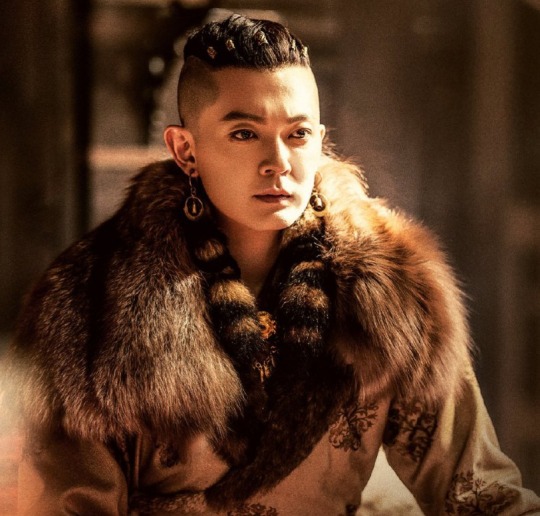

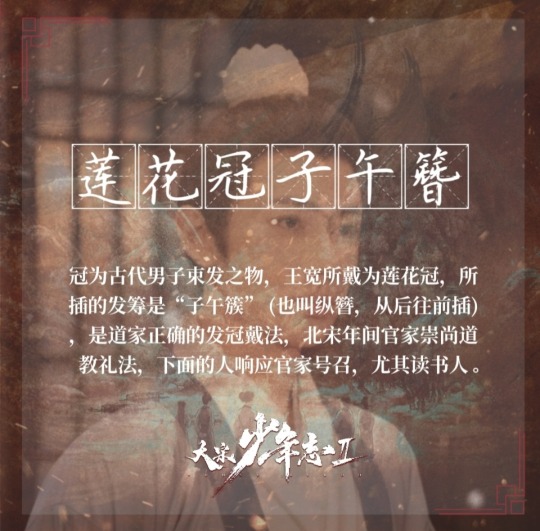
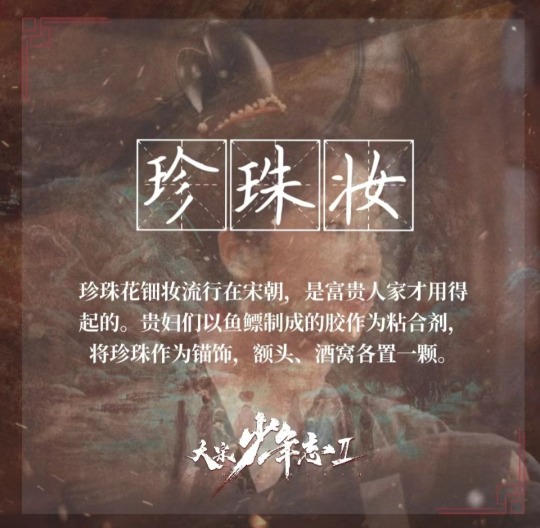


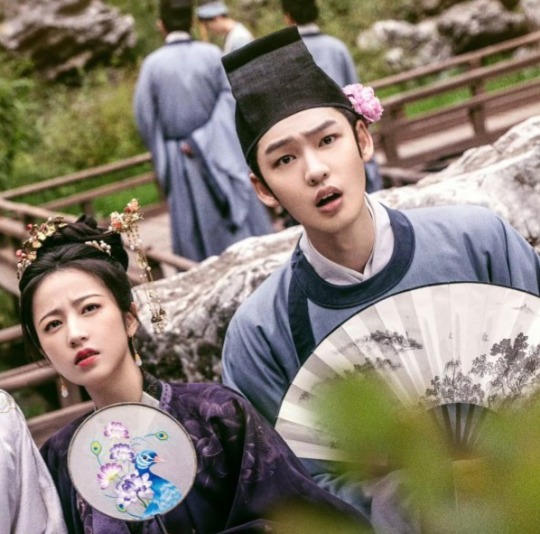
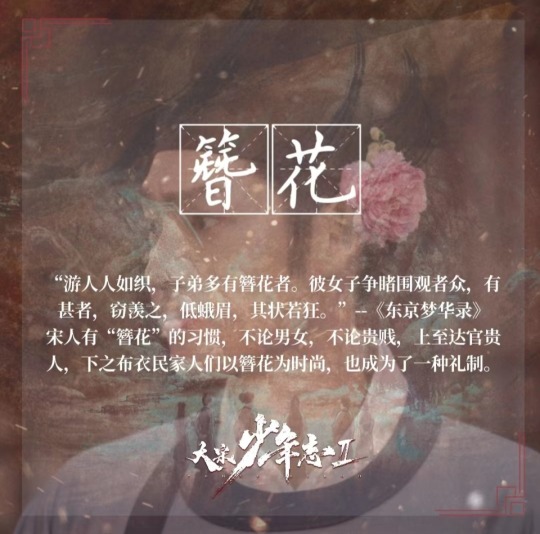
.
More posts by me
#young blood 2#cdrama#chinese drama#song dynasty#young blood#western xia#xi xia#pearl makeup#su embroidery#chinese art#chinese history#chinese culture#大宋少年志2#大宋少年志
15 notes
·
View notes
Text
#.din#.txt#chinese history#sui dynasty was eliminated due to i could not personally care less about the sui dynasty reasons. and ill fistfight all 3 sui specialists.#anyway ya boy is of course voting 唐朝��my political beliefs are 'wu-jiejies zhou dynasty is the better zhou dynasty'#xia dynasty was also eliminated for we only get ten options reasons
4 notes
·
View notes
Text
Xian raptor owners: take note!! In Maurya it’s standard practice to Snood (snood, snooded, snooding) your Raptor during any thunderstorms or festivals. I know the fireworks and chistonworks every year are new and exciting and signal a grand new age under the Tang, but please make sure to keep in mind your pets as well!
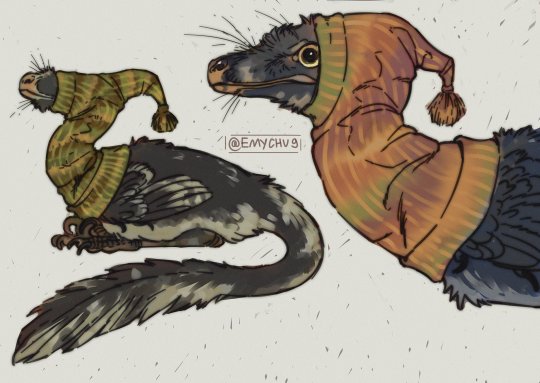
Putting your dromaeosaur in a Snood is a great way to keep them warm in winter AND keep calm during firework displays or thunderstorms!!***
*** we take no responsibility for any injuries sustained while trying to put a dromaeosaur in a Snood
#every since Emperor Gaozu ascended I have had to REPEATEDLY put out these PSAs…#paleobr#tang dynasty#Xia#Maurya#Ennead#fauna#writing
13K notes
·
View notes
Text
Les dynasties Xia et Shang au centre d'un nouveau centre de recherche
Un nouveau centre de recherche archéologique dédié aux dynasties chinoises Xia et Shang sera créé à Luoyang, dans le Henan
Un nouveau centre de recherche archéologique dédié aux dynasties chinoises Xia (environ 2070 avant JC-1600 avant JC) et Shang (environ 1600 avant JC-1046 avant JC) sera créé à Luoyang, dans la province du Henan, selon le gouvernement local. Le centre sera situé à proximité du parc du site archéologique d’Erlitou, l’un des plus importants de Chine. Ce site était autrefois l’emplacement de la…

View On WordPress
#archéologie chine#Chine#chine-magazine#civilisation chinoise#dynastie Shang#dynastie Xia#dynasties chinoises#histoire chine
0 notes
Text
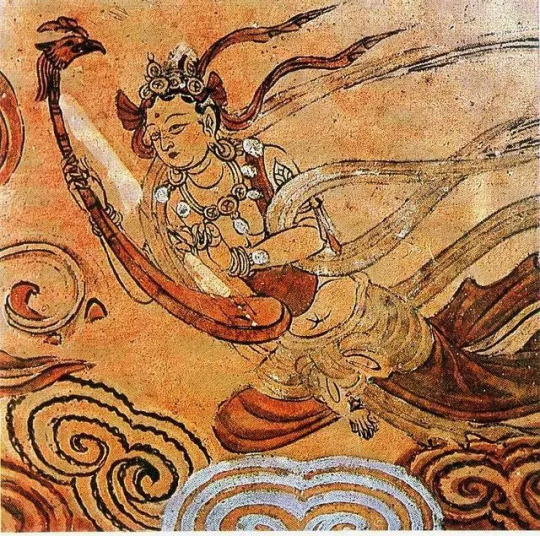
Phoenix headed konghou harp, Sui Dynasty (581-618 A.D.). Mogao Caves, cave 327, of which Chang Dai-chien would paint a replica. That painting was titled "中的飞天" Flying Sky or Flying Feintian.
1 note
·
View note
Text
ech. might consolidate #arthuriana and #the mabigonion under #ancient britannia or #ancient britain to match my other tags of #ancient egypt, greece, italy, and china.
#my stuff#that way i can put irish/scottish stuff there as well. maybe bretonnic or cornish stuff if i ever learn abt that.#uh also. its ancient [name] so i can put both mythology/folklore and archaelogy/history stuff too#based off the greek tradition of the myths existing in ''the distant past''#also kinda like the xia dynasty of china
0 notes
Text
Saw these tags in a reblog of my Chinese museum posts, and thought I have to make a response just so everyone is clear on how archaeological studies are carried out in China:
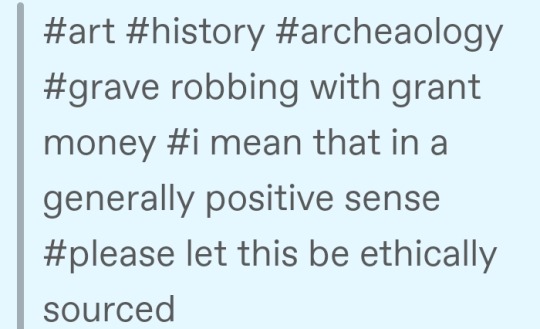
^Well, the Shaanxi Archaeology Museum is a Chinese museum displaying artifacts found in China, it's not the British Museum lol.
But anyway just so everyone knows, modern Chinese archaeology has a rule, which is that unless it's absolutely necessary, an ancient tomb/mausoleum should not be disturbed. This means that many of these artifacts in the museums are found in a few main ways:
Tombs that absolutely had to be excavated because there were clear signs of grave robbing present, for example when tunnels left by grave robbers were found near a known tomb. This is called "excavating to rescue" (抢救性发掘), it's done by teams of archaeologists, the artifacts found will then be studied and eventually find a home in museums in China. In comparison, actual grave robbers would steal artifacts and sell them for money; many stolen artifacts would end up in auctions, mostly outside of mainland China. This is why there is no "general positive sense" in the phrase "grave robbing with grant money" when it comes to archaeology in China. Modern Chinese archaeology and grave robbing are simply not comparable in any way whatsoever.
Tombs that absolutely had to be excavated because new infrastructure will be built in that location. Such exacavations are also included in excavating to rescue. Examples include tombs in Xi'an city that had to be excavated because a metro was being built. Since Chinese people and Chinese culture are native to China, there are no ethical problems whatsoever, this simply a question of what matters more, the welfare of living Chinese people or the abstract afterlives of ancient Chinese people. Obviously, the welfare of living Chinese people is a more important matter. As for the argument of "but this goes against traditional culture", first, a culture is only alive if the people of that culture is alive and doing well, otherwise that culture is as good as dead; second, a major part of traditional Chinese culture IS focused on the welfare of descendants (ex: the belief that the spirits of ancestors will protect their descendants), so I'm sure our ancestors would be proud to see us doing well.
Tombs that were excavated because archaeologists were absolutely sure that artifacts discovered within would make major contributions to the study of Chinese history. This is pretty much the only exception to the rule of "excavating to rescue", and it is very rarely allowed. An example is the Xia-Shang-Zhou Chronology Project (夏商周断代工程), where the main focus is to gain a clearer picture of the timeline of ancient Chinese history, when dynasties began/ended, when major events may have happened, etc.
Artifacts that were found when arresting grave robbers. These are called "recovered artifacts" (追回文物).
Artifacts that returned to China from foreign countries, these are called "returned artifacts" (回归文物). A big portion of these artifacts ended up in foreign countries precisely because of grave robbers, and another big portion were and are still lost for the same reason as why the British Museum has so many artifacts from around the world.
Artifacts that were discovered scattered throughout China. There are three facts to consider here: 1) China has a long history and as a result, there are vast amounts of existing artifacts; 2) tombs are material things and thus are subject to the elements; 3) not everyone is an archaeologist. Combine these, and you have situations were valuable artifacts were found in places like the chicken coop of a farmer (this is how the eagle-shaped pottery ding was found).
Donations. Some artifacts were family heirlooms that were donated to museums.
#chinese archaeology#archaeology#china#以正视听#edited because i typed this out on my phone so there were minor grammar errors
3K notes
·
View notes
Text
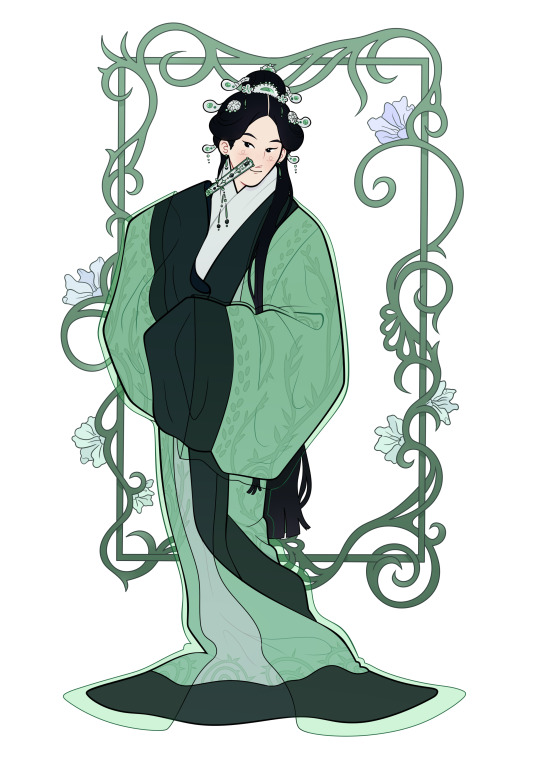
Notification: The peerless jade fairy of Cang Qiong's Mountain Sect is smiling! Looks like he's easily amused by his disciples' antics...!!! What a surprise!!! +300 Overwhelming Beauty Points!
Ok now for my silly little notes in fashion and other nonsense about this piece:
This is specifically Shen Yuan during the pre-abyss arc, mostly because I have a very, very different interpretation of him when he's already married to Binghe- Empress Shen is a whole other, much more decked out beast I will one day tackle.
His clothes are based on late Qin to early Han dynasty clothes for women, mostly because I can, and it seemed perfect for him; it's completely covered, and thus respectable and elegant! Nothing wrong to see here. It's also tight-er around the legs, which leaves things to the imagination...half of the mountain is definitely thinking about his long, slender, lily-white legs at any given time.
Is it technically crossdressing? Yeah, but it is a shitty Xia-Xia world, who's gonna stop me? Airplane? That guy would be on my side, actually.
The see-through outer robe is a flex, look at all that expensive fabric...just hanging off of him...a rich kid in one life a rich kid in all of them.
Binghe does his hair because he's terrible at it and can only do half-updo's or ponytails, he's too distracted by the mere thought of touching Shizun's hair to stop and think why Shen Qingqiu can't do it all of a sudden thankfully.
The hair, on a more serious note, is a bit more realistic to ancient-Chinese hair than an actual half-updo. Though it is more similar to late Han or Tang dynasties hairstyles than anything. Again, shitty Xia-Xia, don't play with me.
There's a little turtle in his fan because I think he'd be like awn that's so cute and either Liu Qingge or Yue QingYuan would be immediately like. I'll buy it!!! He acquires many-a-thing by simply looking cute and staring at it until one of them gets it for him I'm sure.
#art#digital art#artists on tumblr#my art#fanart#svsss#scum villain fanart#scum villain#scum villian self saving system#shen qingqiu#shen yuan#peerless cucumber#cucumber bro#han dynasty#chinese hanfu#hanfu accessories
1K notes
·
View notes
Note
Hiya! How are you doing? I hope you're doing well! Anyways, I have a tgcf request.
So I'm a huge simp for Xie Lia, don't really see many x readers of him that's only with him and the reader, especially female reader. So I was wondering if you could make a Xie Lian x female reader smut? If not, it's okay, at least I tried asking😅 Have a great day/night!👋🏻
sooo before hand, it seems the dynasty tgcf was inspired by was the shang, xia or zhou dynstay, so honestly I'm not good at writing stuff like this but please please I hope this turned out well! wish me luck! ahhh tgcf writers send me those fancy words to use in fics plzzzzz! but anywho I think this might be my fav fic hehehe!
short writing n grammer mistakes( • ᴖ • 。)
warning : smut n also in one line its described reader has breasts but that's I think the only time its mentioned
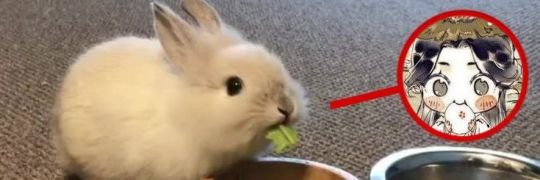
The sun shining so brightly, it was affecting you so much, unlike Xie Lian who despite sweating as much as you, was gleaming as an angel, his skin glowing and shining. You on the other hand, looked so disheveled with messy hair sprawling everywhere and your mind hazy due to the very hot summer heat.
You let out a deep sigh as the sweet essence of the liquid enters you mouth. the sweet nectar dribbling down the sides of your mouth as you continue greedily sucking it as you. Luckily it was the season for peaches! After a hard day of work, you indulged yourself without a second thought.
Xie Lian was also indulging himself, except, only in the sight of you and not the said fruit that was in his hands. "A-lian, this is so refreshing. You take a bite too!" you exclaim happily as you urge him to take a bite out of the unbitten peach.
After a moment he stutters, slightly suprised as his cheeks flush and he zones back in. He then complies and takes a small bite. The flavor gracing his tongue as he swallows. A smile then graces his lips as he nods and replies, "It is delicious."
A simple reply as he licks his lips at the sight of you and also the freshness of the peach. He felt so shameful from these sinful thoughts about you. But he paid no mind since they were just thoughts...at the moment!
You take another big bite of the juicy peach, sinking your teeth into the tender layer. The sweet juices burst in your mouth and dribble down your chin once again. You let out a soft moan of pleasure, eyes fluttering closed as you savor the delectable flavor. It was so refreshing and delicious, plus well deserved after a hard day's work!
Xie Lian unable to resist the urge, holds his own peach in one hand as he uses the other one to move your chin to his direction. You open your eyes confused as he then wipes the sticky substance of the juice off your chin, where it was sliding slowly down your neck. "Such a sweet, messy thing..." he murmurs, eyes lidded slightly, as he then licks each finger coated in the sticky sweetness to remove the juice coating his long delicate fingers displaying off the sight of him looking....
Gosh, now you were in his position. The sight flusters you deeply. A blush coating your cheeks, not from the heat but from another primal feeling. Xie Lian turns his attention back to you as he sees you staring at him so tentatively. In the moment all you can murmur is "A-lian..." as you know what's coming next.
⊱ ━━━━.⋅ εïз ⋅.━━━━ ⊰
"A- lian!" you practically yell, moaning and writhing under said man. He continues burying his head into the juncture of your neck and shoulder as his thick rod is also entering your heat. Gosh the summer heat in the night was making it unbearable as both bodies, covered in sweat, glistened in the moonlight. Yet also stuck to the thin fabric underneath you both.
You hated summer the most, nights like these made you require another shared bath. Summers also made both you and Xie Lian face sticky problems while having moments like these during the night.
He was too far gone and so were you, yet you enjoyed nights like these in your own quiet domestic lives. You adored him so greatly. "Ah..." Xie Lian lets out a soft groan as he intertwines one of your hands together as he now sweetly also intertwines your lips together.
It fit so perfectly. Soon enough, once again, tongues intertwined as spit and saliva combined from both shared mouths as you both hum and make small noises while also kissing a little sloppy since the pleasure was making every sense of your's very hazy.
His delicate slender hands trail down towards your breasts as he cups them in his hands, giving them a good squeeze as he then pinches them. You, closing your eyes since it felt so good. You immediately gasp again as the pace picks up as both the pleasure from his hands and member make you feel drowsy in the best way possible.
The continued sloppy movements continued as you continue holding onto anything you could. You also switch between sucking and biting the soft perfect lips on yours. Everything about this moment was so perfect. Xie Lian above you was heavenly. As his heavenly pillar filled you up whole. (svsss reference hehehehe)
"You were so tempting today," he speaks up, his voice not staggering at all as his typical smile appears once again. But his actions said otherwise, he wouldn't stop not yet. "hah..." he lets out as his eyes close in bliss with furrowed brows that made your stomach have another wave of heat as the feeling of warmth takes over your body.
Apparently Xie Lians too. Not long after, your legs are hiked over his hips and your pulled impossibly closer, then next thing you know it. Pleasure overwhelms you both as he fills you up, and you, meeting the same fate as Xie Lian. throw your head back as you both bask in the moment.
For a moment Xie Lian lets all of his senses override anything for a little. As he lays gently on top of your body, the pair both spent as you turn his head a little to the side so you can lay kisses on the nape, or whatever part of his neck you could reach. Little bites mixed in as the quietness and both of your pants fill up the room.
"Tempting how?" you ask after a while, your brain slightly going back in order as you recall the words he mentioned.
"Tempting as in you teasing me earlier." he murmurs as he picks at imaginary lint at your shoulder, his beautiful long hair also sprawled, except as expected, the man above from you looked better. What could you be expecting?
"Earlier?" you ask thinking back to any events that had happened, yet none had grazed your mind by the slightest so then you meet his eyes confused.
"The peaches were delightful, weren't they?" he hints as he chuckles.
Oh. Oh.
"Shameless, aren't we, A-lian?" you say with a teasing smile as you hint at Xie Lian for being so perverted.
Suddenly then you feel something inside you get hard again as his beautiful pale skin flushes like a porcelain doll as he stutters. Oh Xie Lian. The things you make me think
You sigh knowingly, Xie Lian will be the death of you, not like you minded.
#xie lian x reader#xie lian smut#xie lian#tgcf#tgcf x reader#tgcf xie lian#hua cheng x reader#hualian smut#hualian x reader#hualian
121 notes
·
View notes
Text
wuxia and confucianism
Hey. Thought I'd answer the wuxia-confucian question very briefly. I did suggest wuxia being closely knitted to confucianism, but I do understand the other perspective of wuxia being anti-confucian. Quick answer only because I've got little time right now -- might add on to it later!!

confucianism
First the central themes of confucianism:
常 (cháng): Virtues of compassion and courtesy. 仁 (rén)、义 (yì)、礼 (lǐ)、智 (zhì)、信 (xìn)、忠 (zhōng)、孝 (xiào)、悌 (tì) (there are more). These in order in crude translation mean compassion, righteousness, courtesy, wisdom, integrity, loyalty, filial piety, and respect to one's older siblings. These are the main ideas Confucius, the founder of Confucianism, wished to spread through his philosophy.
纲 (gāng): Order. This is about the relationships between people, the filial piety of a child to their parents, the relationship between significant others, between friends and teachers, and expanding outwards in the sphere of influence in our circle of life, the patriotism and loyalty of a liege to his lord.
Understand that Confucius came up with these ideas in a time of war. He lived his life traversing different kingdoms and establishing his prominence by getting emperors to trust him as a consultant and employ his school of ideas. As such, these beliefs are very much centred around creating harmony and order in society, and of course entails the respect of commoners and lieges to their lords (because why else would kings employ his beliefs over other schools of philosophy if not so?).
wuxia
Moving on to the wuxia genre, the 侠 (xiá) in wuxia emphasises righteousness. xia, as people, are itinerants and rebels in the fictitious pugilistic society who tire of the power of the aristocracy and seek to use their own, often unlawful ways, to help others through 锄强扶弱 (chú qiáng fú ruò) -- helping the needy and going against the strong (the morals are debatable but that's me trying to sum up wuxia in 5 minutes off the top of my head rip).

conclusions
So I guess that's enough information for you to form your own conclusions, and here's what I think, at the very least.
Against Confucianism -- Subverting the power pyramid. Many of the heroes/xia's in wuxia are lawless rebels. They aren't good, upstanding citizens of the society. Hell, xia was first popularised from 游侠列传 (yóu xiá liè zhuàn) in the Han dynasty records, talking about how a "xia" went against the officials and helped the commoners in the name of righteousness. This goes against the confucian beliefs of respecting your lord and serving the kingdom.* That's why I can understand why some would consider wuxia going against confucianism.
Align with Confucianism -- Righteousness. Ultimately, however, wuxia is about righteousness and nobility and honour, defined by society and commoners and not by royal blood. These values of etiquette, decorum, and nobility were long ingrained in the hearts of all these chinese characters, from when the courtesy and etiquette rules were defined in the Zhou dynasty, and afterwards, from the Han dynasty on, when emperors heavily employed Confucian beliefs in education and throughout society because it helps in rebuilding a harmonious society.
Confucianism is about compassion and righteousness, the staples permeating and defining chinese culture in the last two thousand years, and it is these values that serve as the central impetus of the xia and wuxia genres. People are born into these values; as such they fight against the injustice they see, and thus engenders the lost xia's of every dynasty.

*And well, even Confucius wasn't that dead set on fealty to lords. Confucian highly venerated loyalty, but when the court is corrupt, they acknowledge insurgence over the mindless following of an emperor. This is a story for another day, one I would have to back up with more quotes and citations, but I hope this answered your questions, or even better, let you form some conclusions of your own :)
Confucian philosophy is only one aspect that has correlations/influences over the "xia" genre, there are many other interesting things to say about Taoism and Buddhism as well (e.g. Jin Yong's wuxia classics have quite a bit of Buddhist values in the characters owing to author preferences), it's definitely worth looking up on these things if you're interested!
initially reblogged under the original meta post on wuxia, xianxia, and cultivation differences, but i realised it was too long and would bury the reply, so please don't mind me creating a new post for this again.
feel free to ask and discuss!!
#chinese#cdrama#danmei#philosophy#chinese language#chinese culture#wuxia#cnovel#chinese history#confucius#confucianism#chinese philosophy#fate's meta
432 notes
·
View notes
Text




Hanfu Styling in the Wei and Jin Dynasties
From Hanfu Studio-Xiang Tian Xia Mo
132 notes
·
View notes
Text
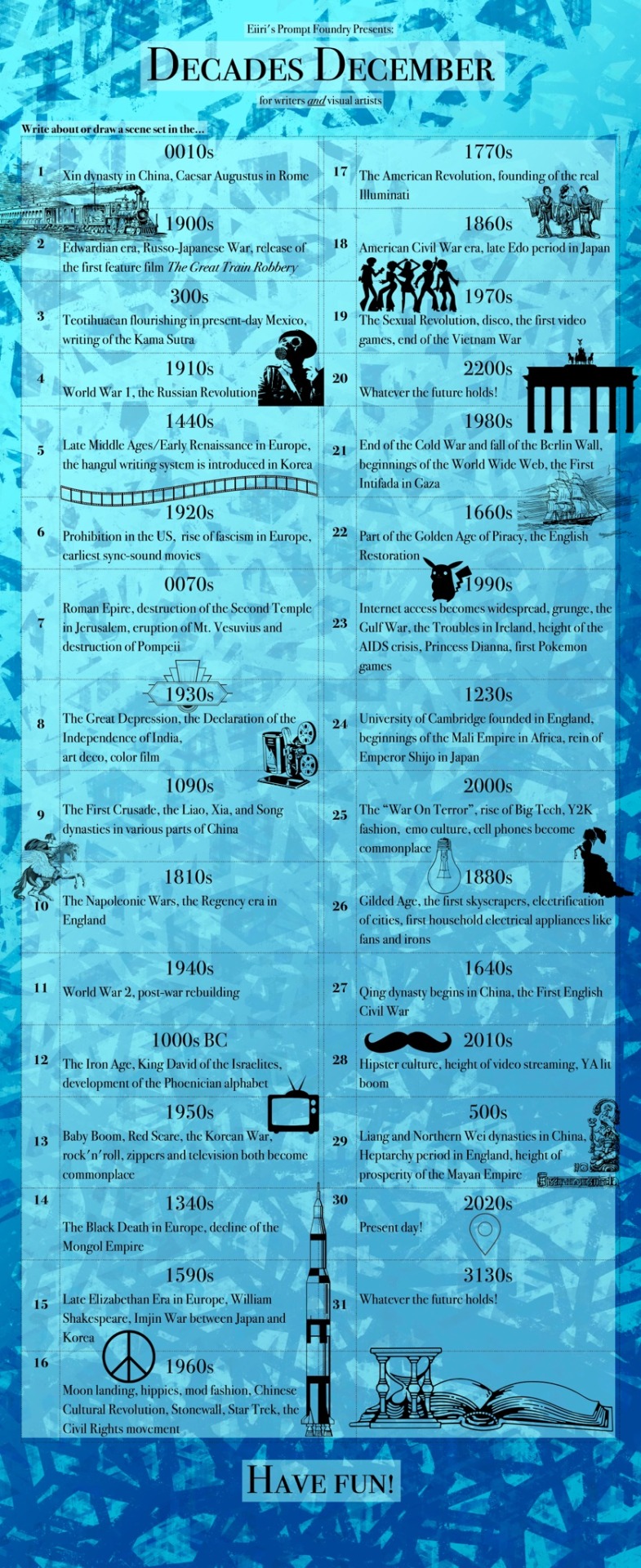
Calling all history nerds, period piece connoisseurs, and fans of time-travel plots! Decades December is coming up here at The Prompt Foundry!
This list is being posted a little earlier than usual because historical work can take some time. The list has some reference points for you to jump off from. Show off your special interest in a particular era or event, or start a wiki walk from the the Wikipedia page for each decade to learn something new!
Have fun exploring resources like @thetimelinesofslang, the Fashion History Timelines from NYSU's Fashion Institute of Technology, or the fashion plates and historical photos from blogs like @omgthatdress or @historical-fashion-polls!
If you use this list, please tag me here @thepromptfoundry, I’d love to see your writing and art!
Feel free to combine different days' prompts with each other, or combine them with other events! Use your OCs, your favorite characters from media, your own experiences, whatever tickles your fancy.
Respond to as many prompts as you want or as interest you, don’t worry about missing or skipping any. Remember, this is supposed to be fun!
If you have any questions or musings, check our FAQ, and if you don't find your answer, shoot me an ask.
Plain text list below the cut:
1) 0010s Xin dynasty in China, Caesar Augustus in Rome
2) 1900s Edwardian era, Russo-Japanese War, release of the first feature film The Great Train Robbery
3) 300s Teotihuacan flourishing in present-day Mexico, writing of the Kama Sutra
4) 1910s World War 1, the Russian Revolution
5) 1440s Late Middle Ages/Early Renaissance in Europe, the hangul writing system is introduced in Korea
6) 1920s Prohibition in the US, rise of fascism in Europe, earliest sync-sound movies
7) 0070s Roman Epire, destruction of the Second Temple in Jerusalem, eruption of Mt. Vesuvius and destruction of Pompeii
8) 1930s The Great Depression, the Declaration of the Independence of India, art deco, color film
9) 1090s The First Crusade, the Liao, Xia, and Song dynasties in various parts of China
10) 1810s The Napoleonic Wars, the Regency era in England
11) 1940s World War 2, post-war rebuilding
12) 1000s BC The Iron Age, King David of the Israelites, development of the Phoenician alphabet
13) 1950s Baby Boom, Red Scare, the Korean War, rock'n'roll, zippers and television both become commonplace
14) 1340s The Black Death in Europe, decline of the Mongol Empire
15) 1590s Late Elizabethan Era in Europe, William Shakespeare, Imjin War between Japan and Korea
16) 1960s Moon landing, hippies, mod fashion, Chinese Cultural Revolution, Stonewall, Star Trek, the Civil Rights movement
17) 1770s The American Revolution, founding of the real Illuminati
18) 1860s American Civil War era, late Edo period in Japan
19) 1970s The Sexual Revolution, disco, the first video games, end of the Vietnam War
20) 2200s Whatever the future holds!
21) 1980s End of the Cold War and fall of the Berlin Wall, beginnings of the World Wide Web, the First Intifada in Gaza
22) 1660s Part of the Golden Age of Piracy, the English Restoration
23) 1990s Internet access becomes widespread, grunge, the Gulf War, the Troubles in Ireland, height of the AIDS crisis, Princess Dianna, first Pokemon games
24) 1230s University of Cambridge founded in England, beginnings of the Mali Empire in Africa, rein of Emperor Shijo in Japan
25) 2000s The “War On Terror”, rise of Big Tech, Y2K fashion, emo culture, cell phones become commonplace
26) 1880s Gilded Age, the first skyscrapers, electrification of cities, first household electrical appliances like fans and irons
27) 1640s Qing dynasty begins in China, the First English Civil War
28) 2010s Hipster culture, height of video streaming, YA lit boom
29) 500s Liang and Northern Wei dynasties in China, Heptarchy period in England, height of prosperity of the Mayan Empire
30) 2020s Present day!
31) 3130s Whatever the future holds!
#the prompt foundry#Decades December 2024#history#historical fashion#historical fiction#prompt list#drawing prompt#writing prompt#art prompt#writing challenge#writing inspiration#drawing challenge#drawing inspiration#art challenge#art inspiration#speculative fiction#time travel#period piece
90 notes
·
View notes